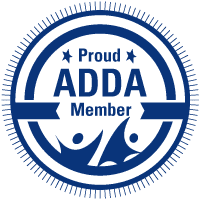You’ve probably heard of switch-tasking and task batching in terms of productivity.
Switch-tasking (or what some refer to as “multitasking”) and task batching are at opposite ends of the spectrum.
Switch-tasking is switching rapidly between two tasks or actions. Unfortunately, switch-tasking is costly; “shifting between tasks can cost as much as 40 percent of someone’s productive time.”
Task batching is grouping similar tasks to complete in one block, creating greater efficiency.
Productivity is enhanced when we batch similar tasks:
“The human brain works best when it focuses on one thing at a time. We have a certain amount of cognitive capacity and a certain amount of attention.” —Dr. Sahar Yousef, Cognitive Neuroscientist, UC Berkeley
What types of activities can be batched for greater efficiency:
E-mail: Set aside two to three times a day to process e-mails, focusing on reading and deciding the following steps, not doing the work the e-mail may produce. Switching between reading e-mails, focused work, meetings, discussions with colleagues, letter writing, research, etc., decreases productivity significantly.
Phone calls: Depending on if this is an energy-draining or energy-producing activity for you, set a timer for 15 minutes and make the necessary phone calls. But, again, wait to do the work that the phone calls may generate; schedule that for another time.
Administrative tasks: These are generally tasks that must be done on a computer. Examples may be expense reports, time scheduling, planning, etc.
Task batching can be used to complete household chores more efficiently also.
Errands: If you need to run to the post office, think about all the other errands that can be efficiently done simultaneously and document them (preferably in the order they can be most efficiently completed). Tackling multiple errands with one trip is far more efficient than leaving the house AGAIN because you forgot the Post Office stop.
Household chores: It’s far more efficient to vacuum the whole house at the same time, dust the entire house at the same time, empty all the garbages, etc., versus going from room-to-room switch-tasking along the way.
No matter what type of tasks you are taking on, there are some tried-and-true productivity tools:
1. Do the tasks you deem most difficult in the highest energy part of your day. For example, if you are a morning person and you dislike making phone calls, put them on your calendar for first thing in the morning. As a result, you will have more energy and resilience, thus avoiding procrastination.
2. Reduce distractions. No matter what tasks are on your plate, reducing the opportunity to be drawn away from the task is crucial. Shut your door. Put your phone in a different room. Close your e-mail program. Anything that can be done to reduce distractions is critical.
3. Break action items down into manageable tasks. “Prepare taxes” isn’t a management task. “Collect tax receipts” is a manageable task and can be completed in a relatively short amount of time.
4. Utilize an accountability partner. Having someone with whom we share our intentions and actions helps keep us on task. If we know we will be reporting back, we have a greater opportunity to fulfill our intentions.
Cindy Jobs, PCAC, ACC
Looking for more information?
Click here for ADHD-friendly Time Management Tools
Click here to schedule a complimentary breakthrough session.
For more helpful information, follow me on Facebook.







